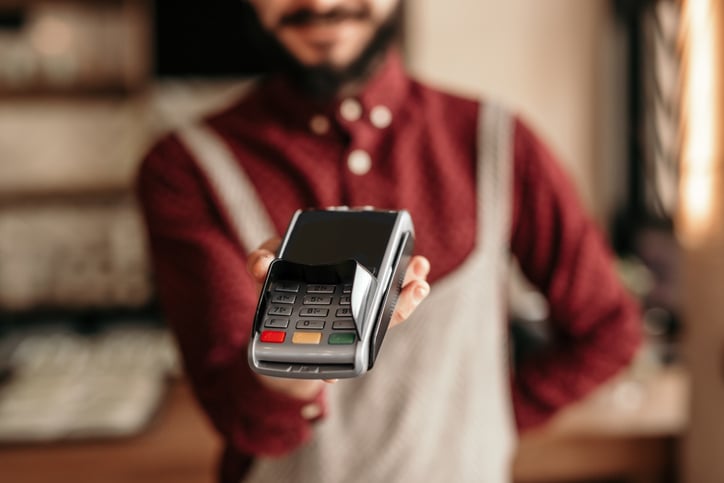Tipping has been common in the United States for a long time. But in the last few years, expectations have risen. More and more businesses are asking for tips. Some consumers have complained about being asked for tips in grocery stores, airport shops, and even places where they used self-checkout.
You might have also noticed businesses asking for larger tips. Some businesses have tip screens that start at 20% or 25% and go up from there. If you want to tip a smaller amount, you need to manually enter it.
Nobody wants to spend a huge chunk of their paycheck on tips. But tipping culture isn’t going away. Here’s how you can find the balance between tipping a reasonable amount without hurting your personal finances.
Plan for how much a tip will add to your bill
For situations where a tip is expected, estimate how much it will cost beforehand. Then, you can figure out the total cost of that service and see if it works for you.
Let’s say you’re planning a date night. You find a restaurant, and you see that dinner for you and your spouse will likely cost about $100. If sales tax is 8% where you live, that will be another $8. The standard guideline for tipping at a restaurant is 15% to 20% of the bill, before tax, which would be $15 to $20 in this example. In total, that dinner will likely cost $123 to $128.
If you were planning on spending $100 at most, then you’re going to get an unwelcome surprise. When you instead plan for the total cost, there are no surprises. You can decide if that amount works for you, and if not, you can pick a more affordable option.
Carry smaller bills to use for tips
I still remember an awkward moment during a vacation, when a bellhop helped me with my luggage. It wasn’t much work, and $5 would have been an appropriate tip. I looked in my wallet — I didn’t have anything smaller than $20. It was good news for him, at least.
That’s why I always make sure to have smaller bills in my wallet. More businesses than ever are accepting tips with credit cards, but that’s still not always an option. Some places only have tip jars, and there are also service professionals who only take tips in cash, including bellhops, valets, and housekeeping.
There are a few ways to get smaller bills. What I do is ask the cashier at the grocery store to break a larger bill. This is a convenient option, since you can do it any time you’re grocery shopping. Some ATMs give you the option of selecting the denominations you want. You can also visit one of your bank’s branches and ask for specific bills, which is one of the benefits of in-person banking.
Don’t feel obligated to tip more than you want
Tipping is your decision, not the business’s. Remember that:
- You don’t need to leave a tip just because the business is asking for one. If it’s not a situation where you’d normally tip, there’s no need to do it because there’s now a tip screen at checkout.
- The amount you tip is up to you. The reason tip screens suggest high tip amounts is that many people will pick whatever’s available. If you were planning to tip less, stick to your plan.
- You don’t need to tip if there’s a service charge. This is a pet peeve of mine. Some businesses tack on a service charge and still ask for a tip. My rule is that I’ll either pay a tip or a service charge, but I’m definitely not paying both.
When in doubt, look it up
It’s good to have an idea of the situations when you should tip. But it can be hard to keep track of everything, and each culture is different, too. For example, in many Asian countries, tipping isn’t expected and can even be considered impolite.
Whenever you’re not sure if you should tip, or how much, search online. You can find tipping guidelines for just about any situation. Just make sure to find out in advance. It’s a little awkward to do this while you’re paying for a service. Use the info you find, plus what works with your financial situation, to decide on a fair tip that you can afford.
Alert: highest cash back card we’ve seen now has 0% intro APR until 2025
If you’re using the wrong credit or debit card, it could be costing you serious money. Our experts love this top pick, which features a 0% intro APR for 15 months, an insane cash back rate of up to 5%, and all somehow for no annual fee.
In fact, this card is so good that our experts even use it personally. Click here to read our full review for free and apply in just 2 minutes.

